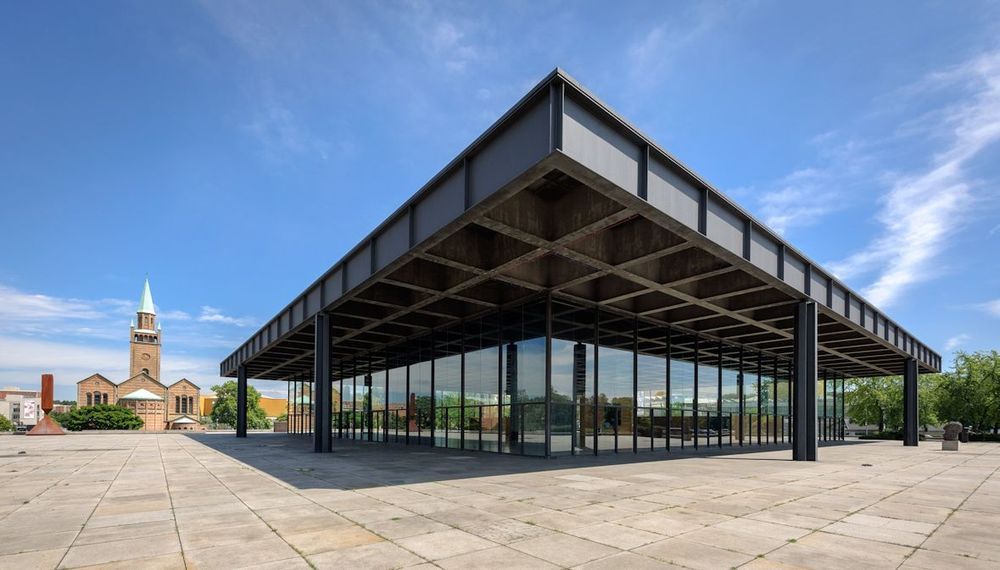Before the Second World War, there was a clear distinction between future-oriented architecture and one that expressed “here” and “now”. But after 1945, this distinction became less pronounced. The forms and ideas of the forward-looking avant-garde, which bore such rich fruits by 1939, were absorbed by the more mundane architectural reality of the 1950s and freed from their sublime utopianism.
Modernist ideas about light, air and space, about befreites wohnen (“liberated living”), as Siegfried Gidion called this set of ideas in 1929, about the use of new materials and technologies, about mass production and functionality as the main goals of architecture (and all these objects in the past carried an ideological load) have become, according toapparently, self-evident components of design and architectural practice in most European countries. This type of modern architecture has become ubiquitous partly due to the steadily high pace of construction, which was initially caused by the need to repair the damage caused by the war, and then to meet the needs of a growing and increasingly prosperous population.
At the same time, when the ideas and forms born of the avant-garde were assimilated by the main architectural stream of the 1950s, many architects who had been radical modernists up to that time abandoned the doctrine of functionalism. More precisely speaking. Many of them embarked on a new path back in the 1930s. This shift is evidenced by the themes of the post-war conferences of the followers of SIAM: architecture and art began to be perceived as the heart of the city and the habitat. These conferences dealt with more humanistic and poetic subjects than those that interested architects in the pre-war period (housing necessary for existence, rational approaches to construction, a functional city).
The avant-garde modernism of the 1920s and 1930s melted down after 1945 into fonctionalisme tempere (“moderate functionalism”; Jacques Lucan used this term to characterize French architecture of this period).
Modernism has become more moderate in two different ways. Firstly, its forms, materials and colors have acquired a softer and more ordinary character. Secondly, he acquired the luxury and brilliance that sometimes characterized him to a large extent. In Europe, this was observed less frequently than in the United States in the 1950s and 1960s, but in Europe — partly due to American influence, as well as American architects, customers and sponsors — the architecture of abundance developed. The first examples of this luxurious modernism appeared in the 1960s.
These were such large public buildings as the New National Gallery in Berlin, designed by Mies van der Rohe, the Danish National Bank of Arne Jacobsen in Copenhagen, the House of New Zealand “Robert Matthew, Johnson Marshall and Partners” in London and the Federation Palace in Belgrade. Some corporate structures can also boast of modernist brilliance: the administrative buildings of Jean Choumi in Vevey and Lausanne, the central office of Hugh Mascant’s Johnson Wex in Meidrecht, the head office of Marcel Breuer’s Van Leer in Amstelveen, numerous international business hotels and airports. Combining some excesses and elements of abundance with details highlighted with jewelry subtlety, this kind of modernism reflected the luxury that many European countries already enjoyed in the 1960s. It also showed to what extent modern architecture has become an attribute of the establishment.
The hospitality, ease, comfort offered by modernism are noticeable in the architecture of shops, department stores and shopping centers, such as the Leinbahn in Rotterdam by Van den Broek and Bakema; in the architecture of cafes, restaurants and entertainment venues, as well as exhibition pavilions, in particular, those that were presented at the Festival of Britain in 1951 and at Expo-58 in Brussels. In these structures, the idealism of pre-war modernism was reinterpreted and acquired a less grandiloquent appearance. Architects no longer wanted to work primarily for the benefit of humanity; their attention has become more attracted to the needs of the individual.
